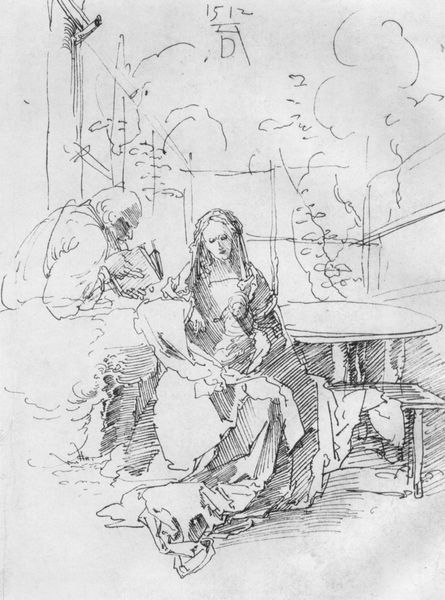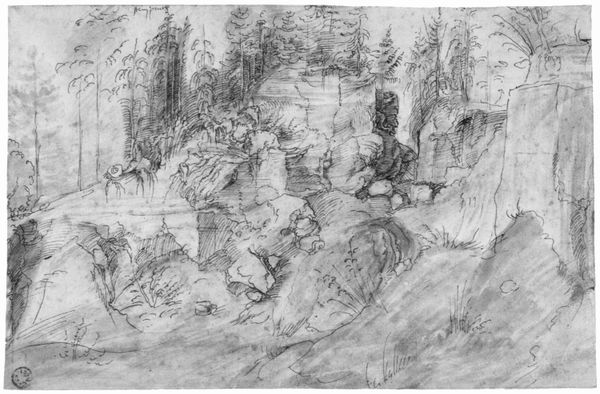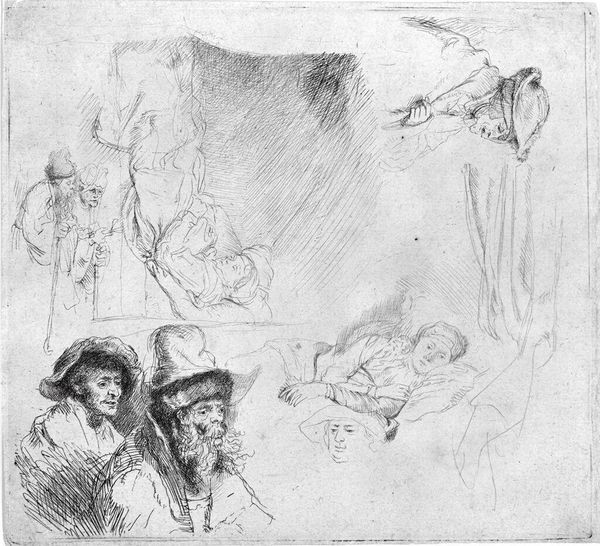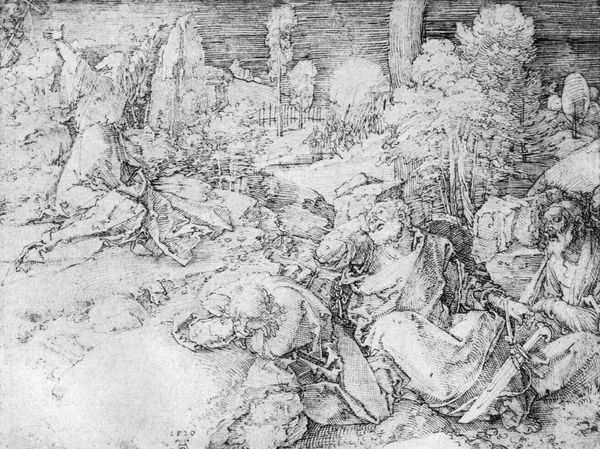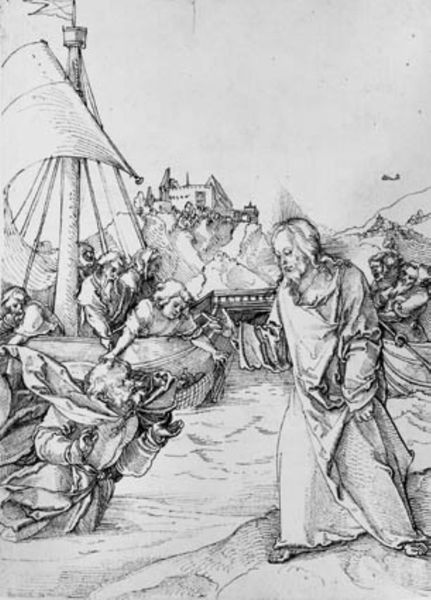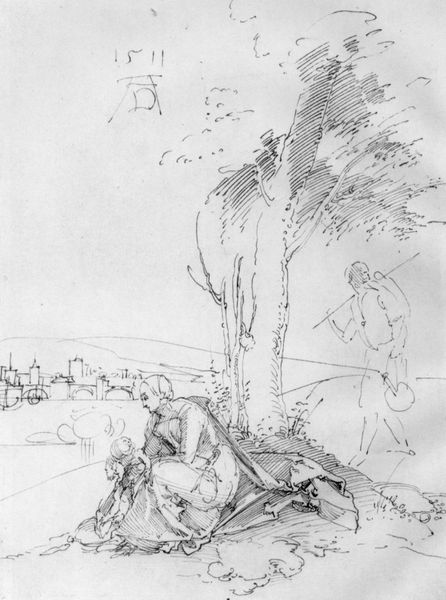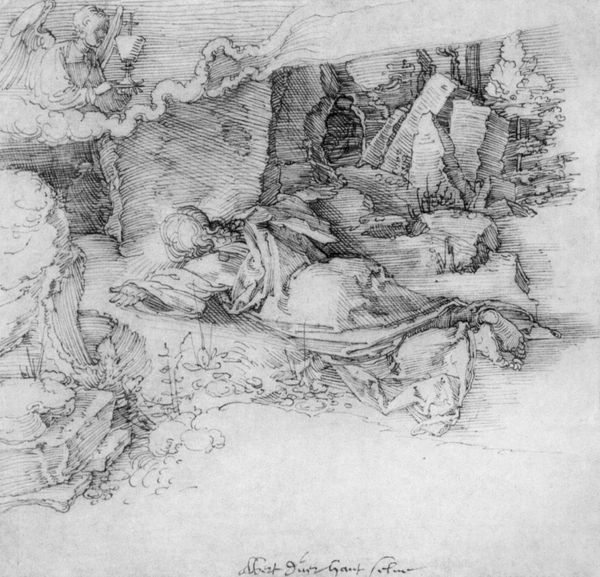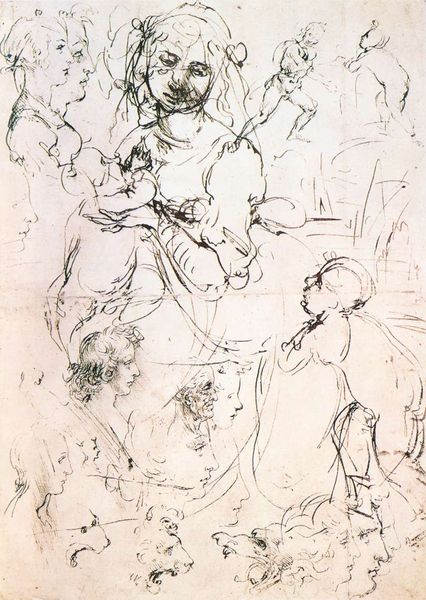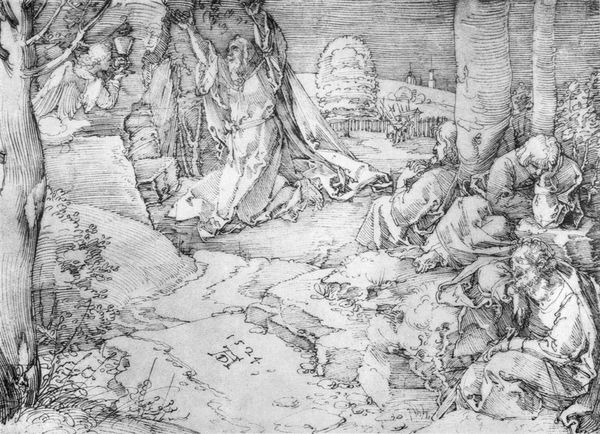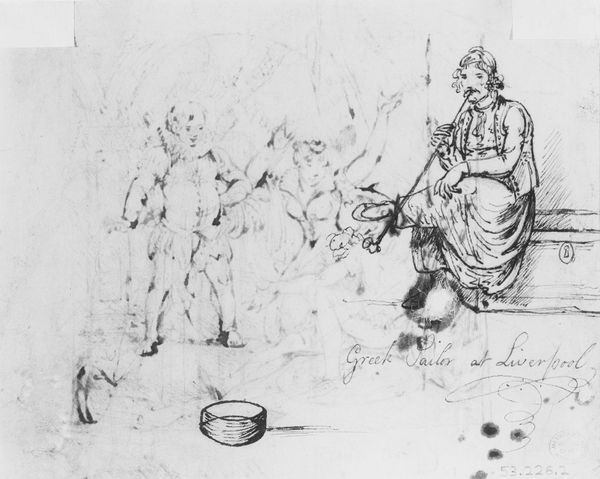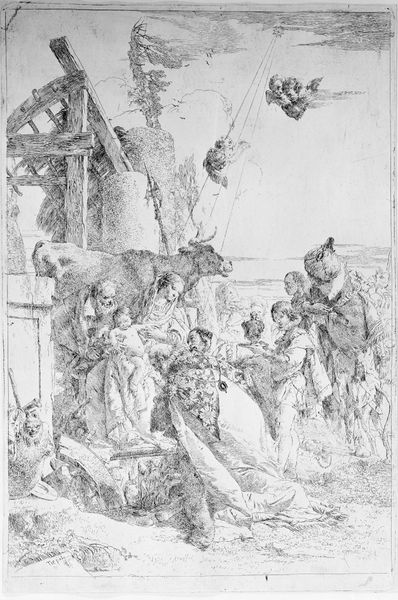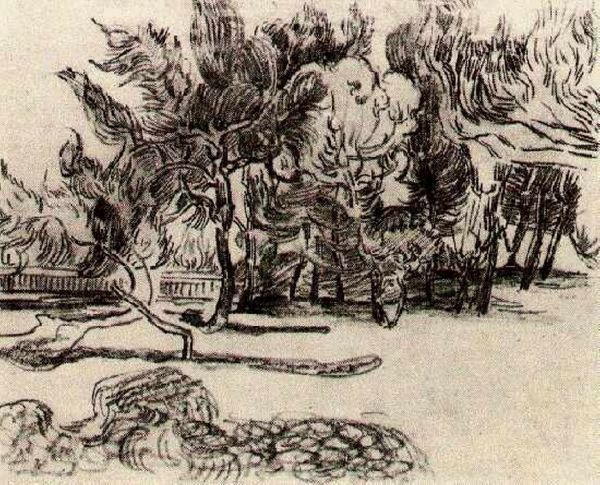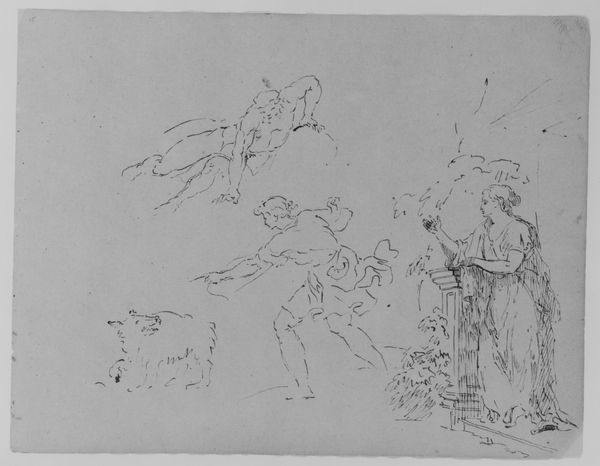
Copyright: Public domain
Curator: So, this is Albrecht Dürer's "Christ on the Mount of Olives," an ink drawing from 1515. Currently residing at the Louvre. What's your initial read? Editor: Bleak. Utterly bleak. It's all scratchy lines and nervous energy, that sense of impending dread just oozes off the page. The landscape feels… threatening, almost alive. Curator: Threatening is interesting. It's not a cozy scene, that’s for sure. You have Christ kneeling, head bowed, and this rather startling angel looming above, offering a chalice, which is sort of on a ledge. Meanwhile, the disciples are just conked out below him. Classic! Editor: Right? Talk about tone deaf. I’m particularly drawn to how Dürer portrays the angel and chalice – floating outside conventional spatial logic, as if entering the scene from another plane. It's a powerful rendering of divine intervention. The chalice symbolizes, of course, Christ's impending sacrifice, but to me, it's also about acknowledging those times we're called to make sacrifices, to endure hardships, whether for our community or for some greater cause. It resonates beyond its Christian context. Curator: And the sleeping disciples? It's fascinating how Dürer renders their vulnerability. They’re slumped, almost childlike, totally oblivious to the cosmic drama unfolding above them. Maybe he's suggesting something about the human condition—our frequent failures of attention? Editor: Precisely! The artist juxtaposes human frailty against this huge spiritual challenge. Their sleep signifies a wider societal slumber, a blindness to the systemic injustices that are, then as now, being perpetuated all around us. Curator: You know, what strikes me most is the fragility of the ink lines. It’s as though Dürer captured a moment so raw, so full of angst, that it could dissipate at any moment. Like a charcoal drawing where you have to stop breathing to avoid smudging it. Editor: Agreed. It is incredibly delicate. But it also reminds me that moments of crisis—both personal and collective—are often what force us to confront uncomfortable truths. Like this image compels us to acknowledge human weakness but also resilience. Curator: I think you're spot on. It makes you think not just about what's happening *to* him, but about what he’s internalizing. He isn’t passive, there's some kind of strength present here. Editor: Dürer gives us a chance to connect to history, faith, and humanity. It encourages us to contemplate not just a biblical narrative but the enduring power struggles, moral compromises, and quiet moments of grace that still define our present. Curator: Yes. It’s really a masterpiece of human experience, isn’t it? Editor: Indeed.
Comments
No comments
Be the first to comment and join the conversation on the ultimate creative platform.
